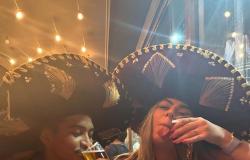The belief that economic development and forest conservation are opposing concepts is a widespread idea not only in Brazil, but in various parts of the world. However, studies such as Changes in the Global Value of Ecosystems Service and the World Bank report show exactly the opposite: the Amazon generates more wealth while standing.
The estimated value of the Amazon Forest, according to research, comes from riches such as its biodiversity, which represents no less than 25% of all terrestrial biodiversity; comes from “flying rivers”, essential for agriculture and energy generation; and countless means of subsistence for agroextractivist populations. The study Strategies for the Development of the Brazilian Amazon: Lessons Learned from Pre-Competitive Arrangements, signed by researcher Salo Coslovsky, from New York University, shows that communities and companies based in the Legal Amazon already export 64 products compatible with the forest and, with This generates almost US$300 million a year. This value is equivalent to just 0.17% of the markets for these products, indicating that there is still gigantic potential to be explored in the Amazon.
In this context, Natura established a business model based on socio-bioeconomics that corroborates the conclusions of the studies cited in the opening: conservation and prosperity go together. Therefore, the brand has its main research platform and fundamental vector of innovation in the Amazon, in addition to being present in the local supply chain, causing a positive social impact in the region.
With part of its journey dedicated to bioactive research, Natura has already developed 44 bioingredients in an ethical and sustainable way. Among them, the bioactive tukumã, a fruit that had not had its full potential utilized by industries, including cosmetics. “Today, tukumã is seen as gold, a source of prosperity and empowerment for us and our families”, says one of the workers at the fruit extractive cooperative.
Another successful example of this model is the ucuuba case. Before its cosmetic use, the tree’s value was barely recognized. The species was on the verge of extinction, felled to produce broomsticks, a product with low added value. In partnership with researchers, Natura found that the annual harvest of a preserved tree produced three times more income than logging. While cutting down the tree only happens once, seed extraction can be done for at least 10 years.
The bioeconomy practiced by Natura seeks to promote the regeneration of the forest and the progress of the people who make up its network. The initiatives can be translated into numbers: the brand’s sustainably developed products generate income for more than 3.5 million Natura and Avon Beauty Consultants in Latin America. Furthermore, together with 44 agroextractive communities, made up of more than 10 thousand families, Natura contributes to conserving more than 2 million hectares of forest.
The study There Is No Planet B: Aligning Stakeholder Interests to Preserve the Amazon Rainforest, conducted by researchers from the University of Toronto and the University of Pennsylvania, used different econometric models and proved that there was more conservation where Natura operates. The preserved area corresponds to 730 thousand hectares, which represents a saving of around 58 million tons of carbon. This means that Natura managed to conserve and regenerate the Amazon by offering a viable economic option for small rural producers to keep the forest standing.
Doing business in a regenerative way goes far beyond practices applicable to agricultural production and soil recovery: human and social factors are inseparable from environmental challenges. “For us, regeneration is the process of restoring life to individuals, communities, nature and the relationships between them”, says Angela Pinhati, Director of Sustainability at Natura &Co América Latina.
In 2024, the year in which it celebrates 55 years of foundation, Natura has reasons to be proud of all the work carried out on this journey, but it is already pursuing new goals: the conservation of 3 million hectares of forest, the increase in the human development index of its Beauty Consultants, the growth in the number of agroextractive communities and the dissemination of awareness that it is necessary to preserve to generate wealth. Objectives that are only possible when we believe that people’s well-being is directly related to the well-being of the planet.
*BrandVoice is the exclusive responsibility of the authors and does not necessarily reflect the opinion of FORBES Brasil and its editors.





